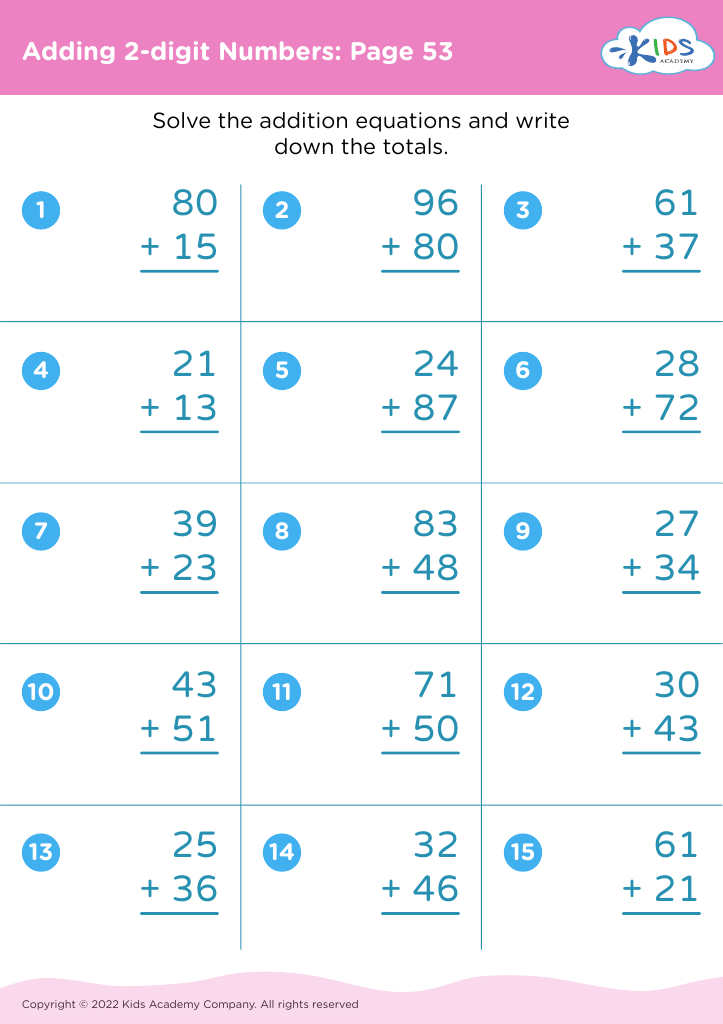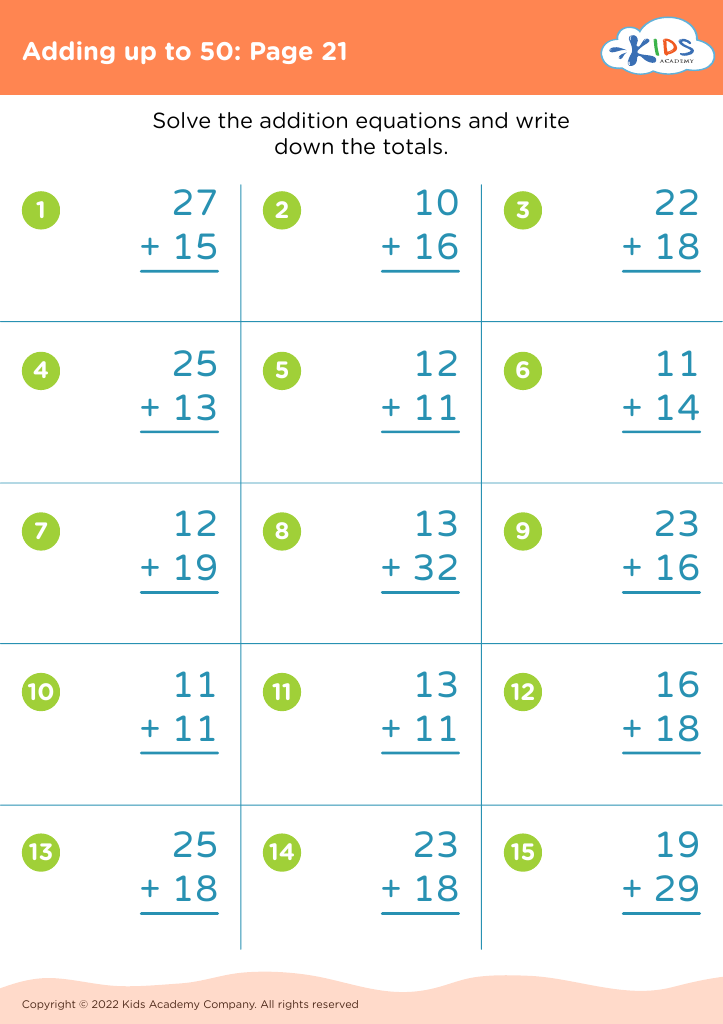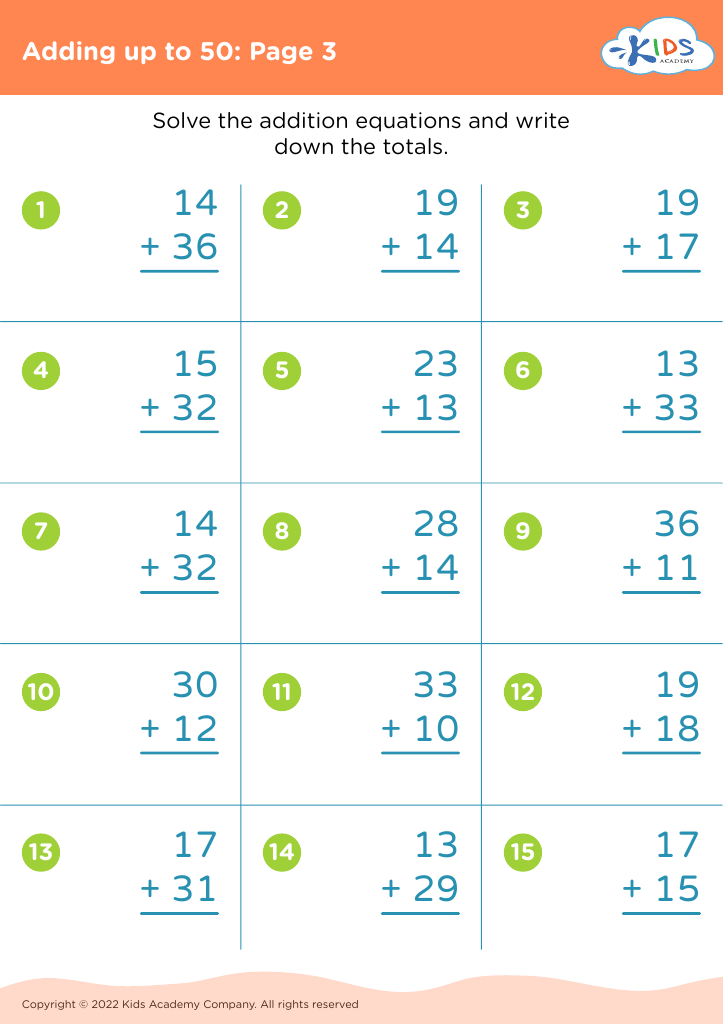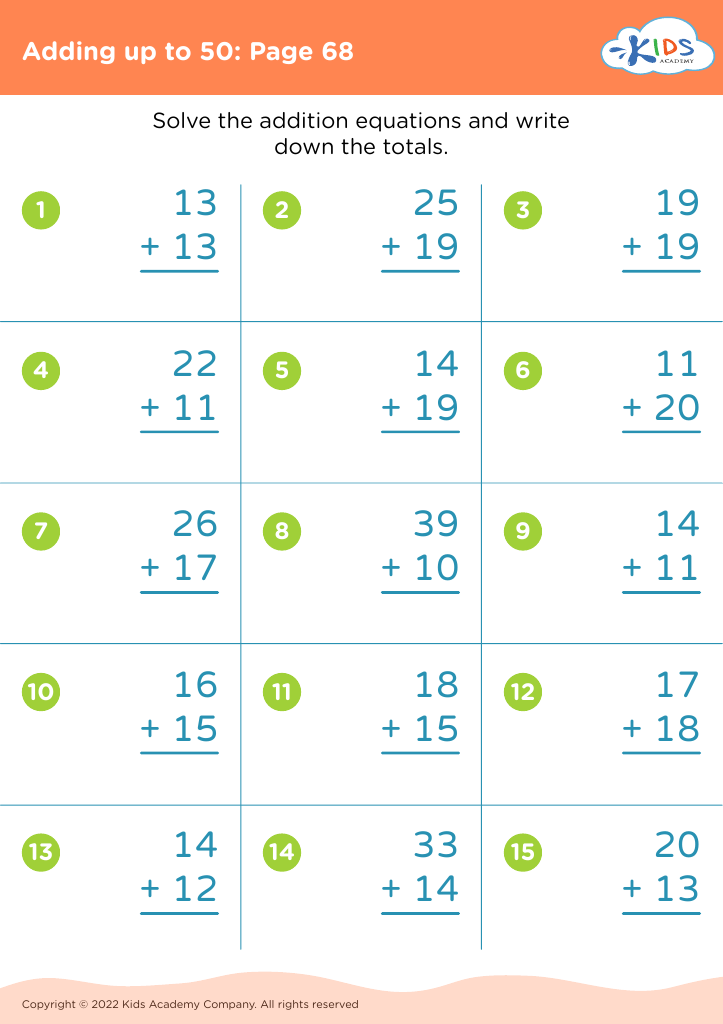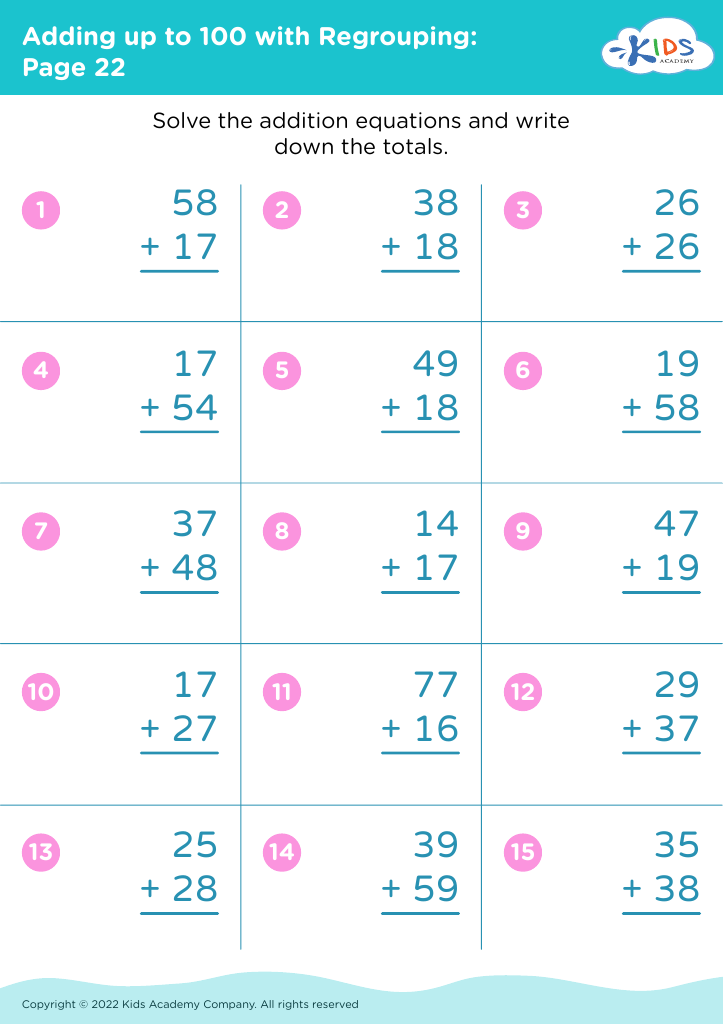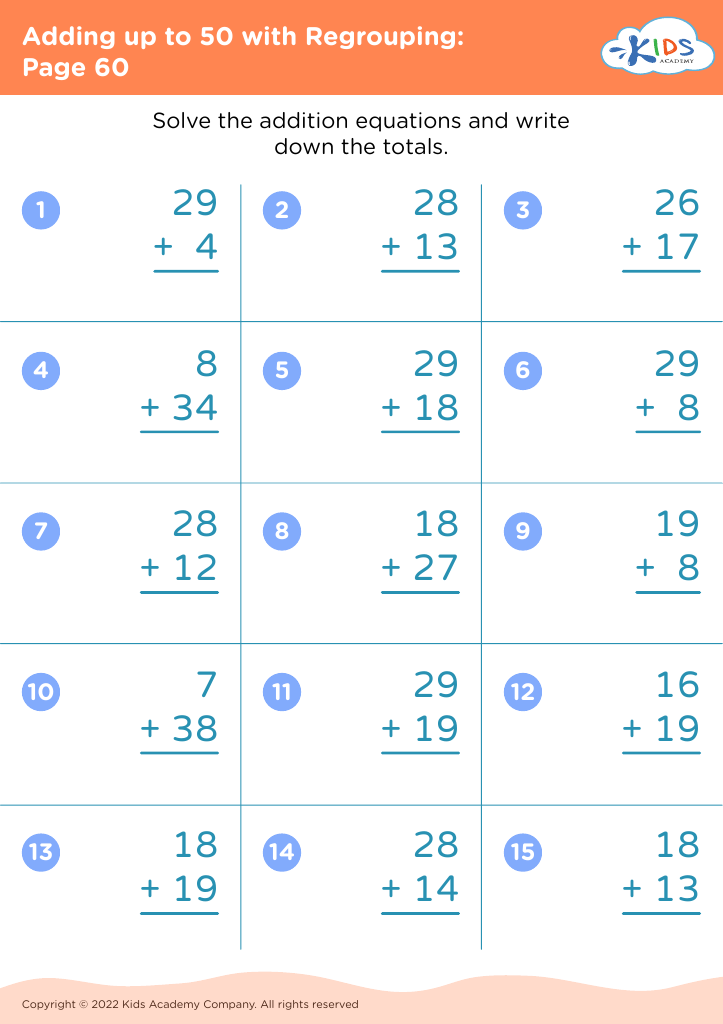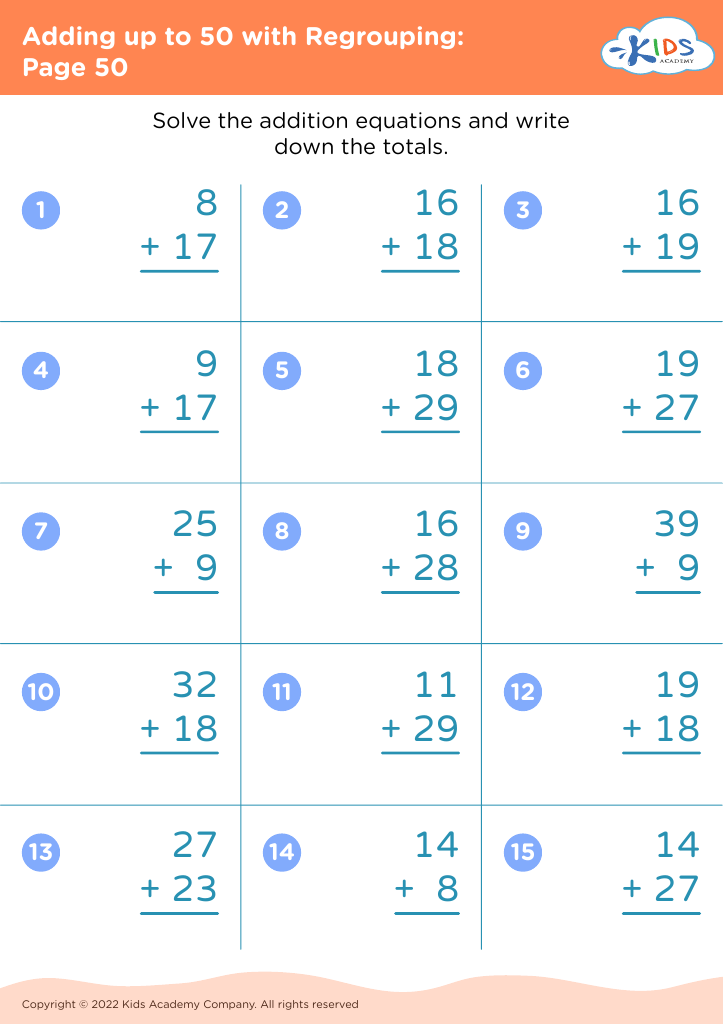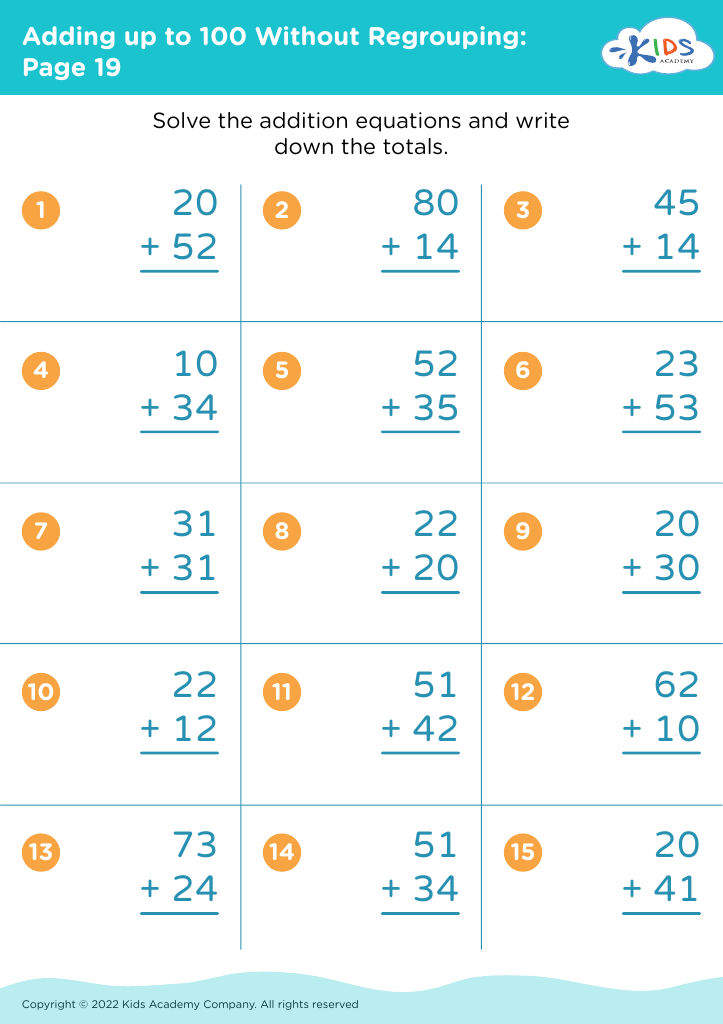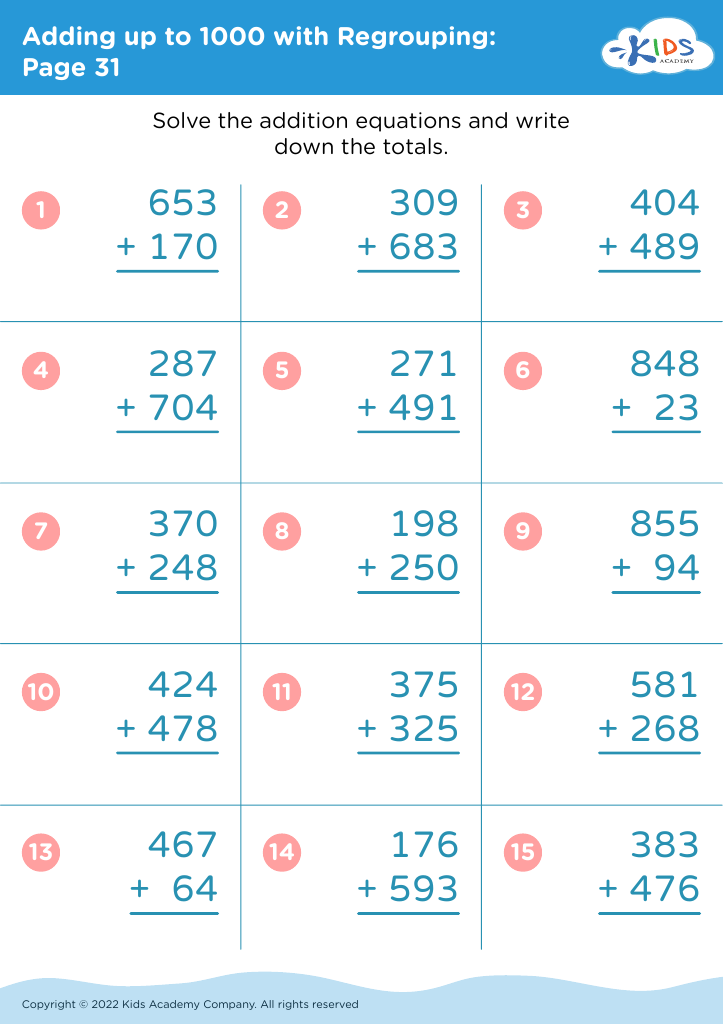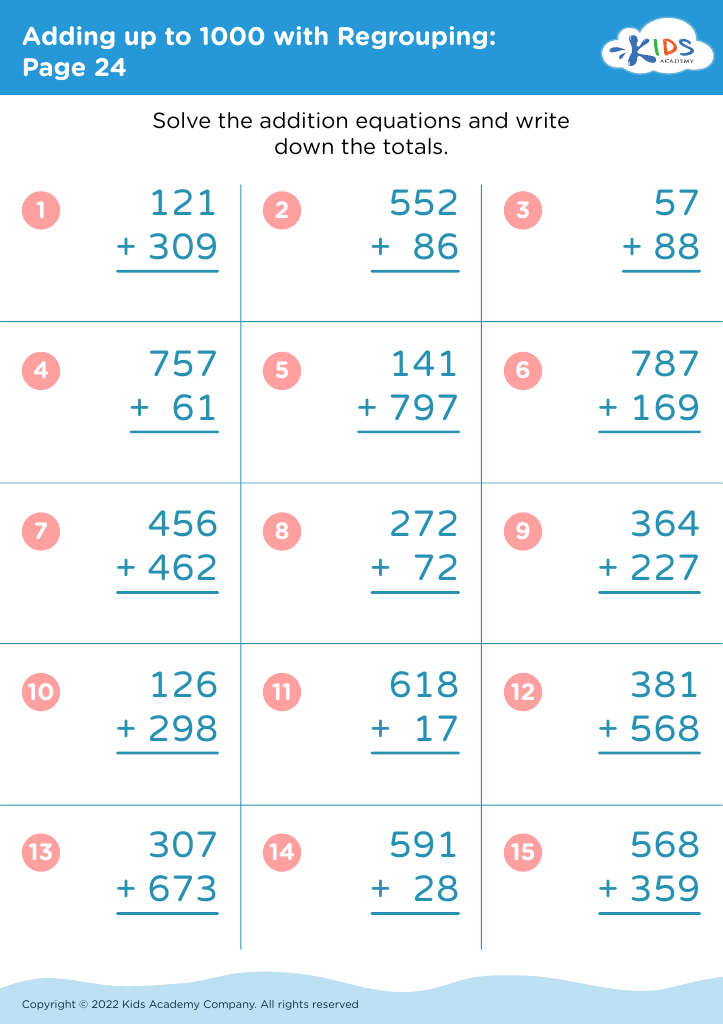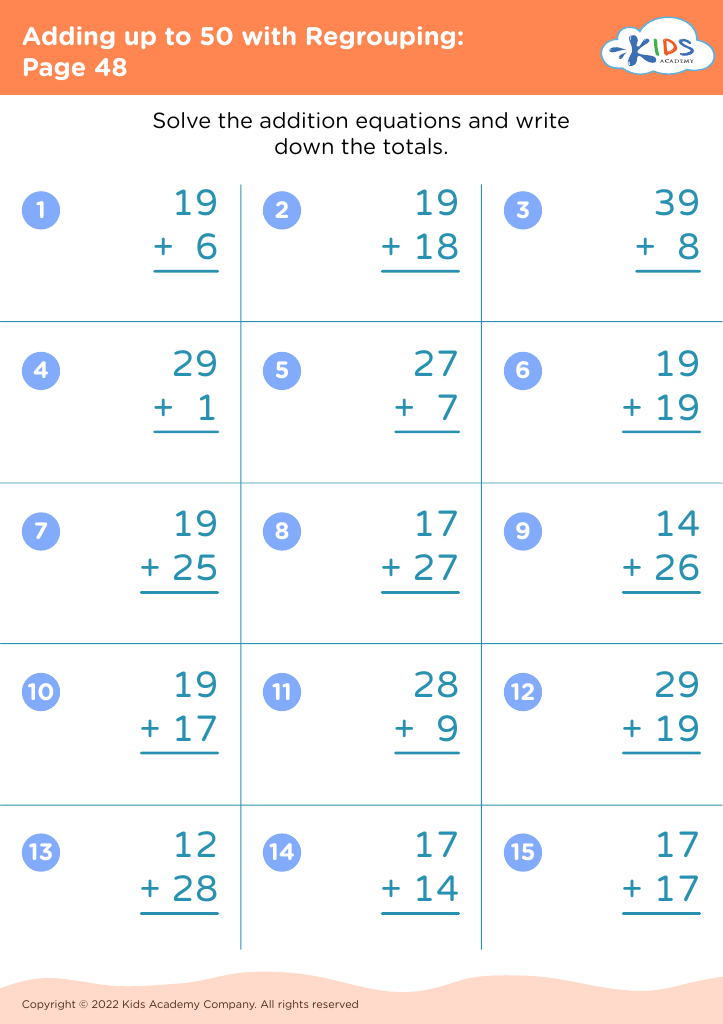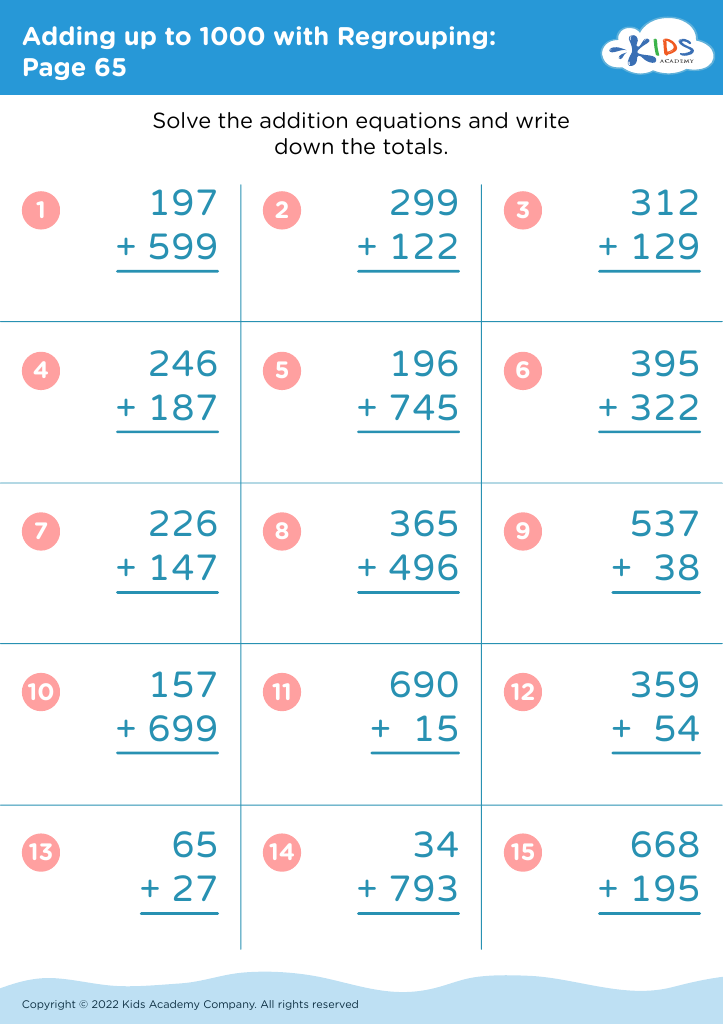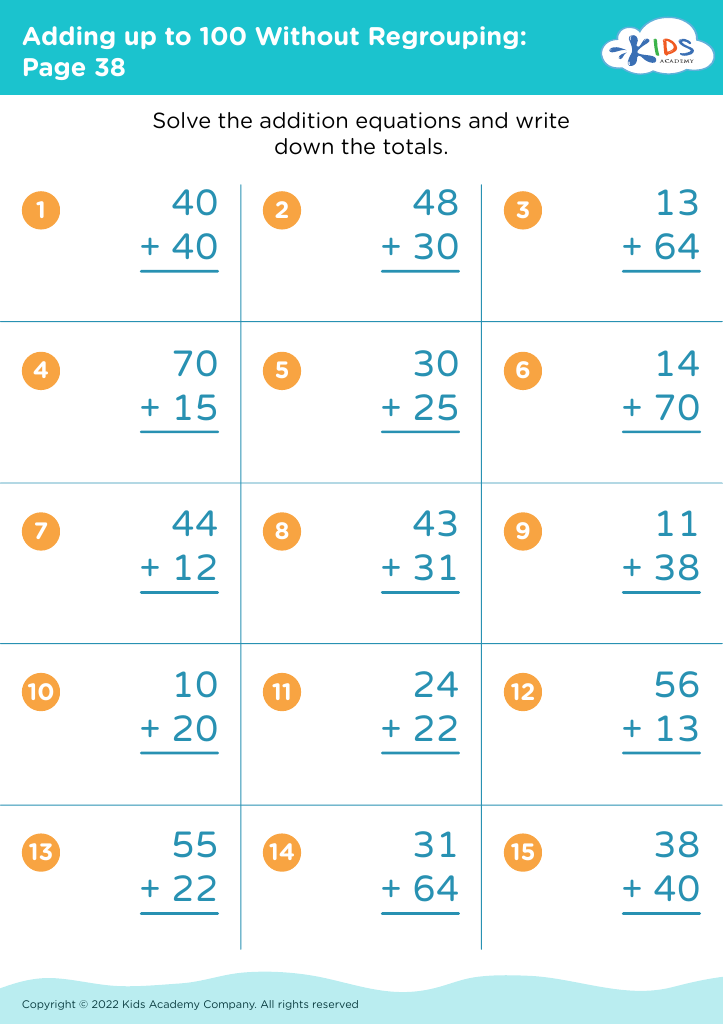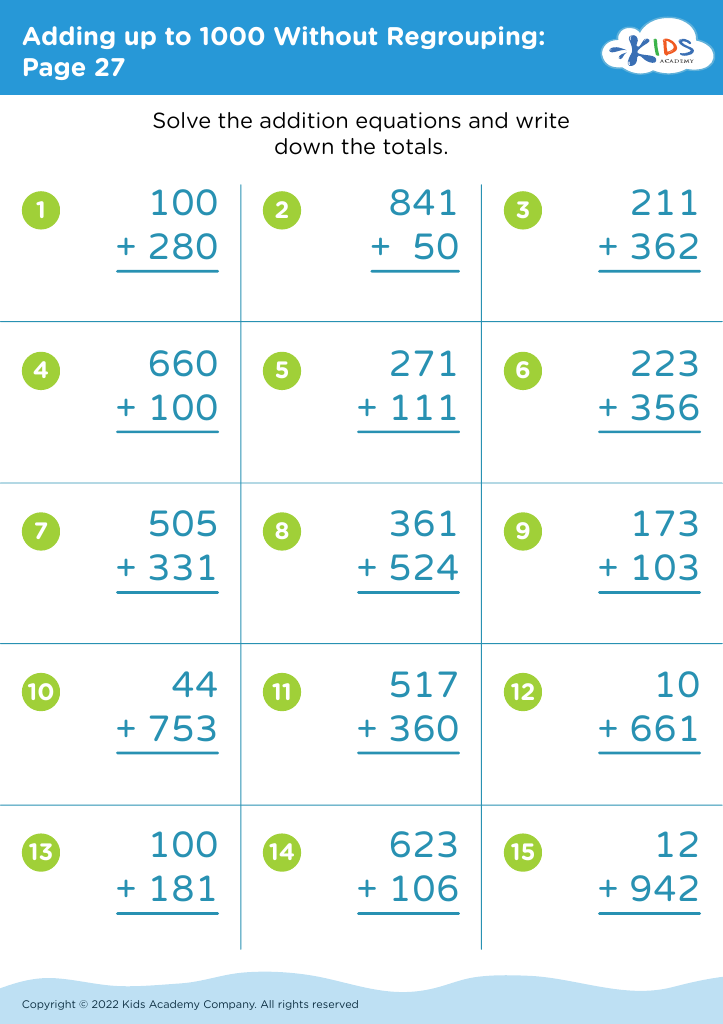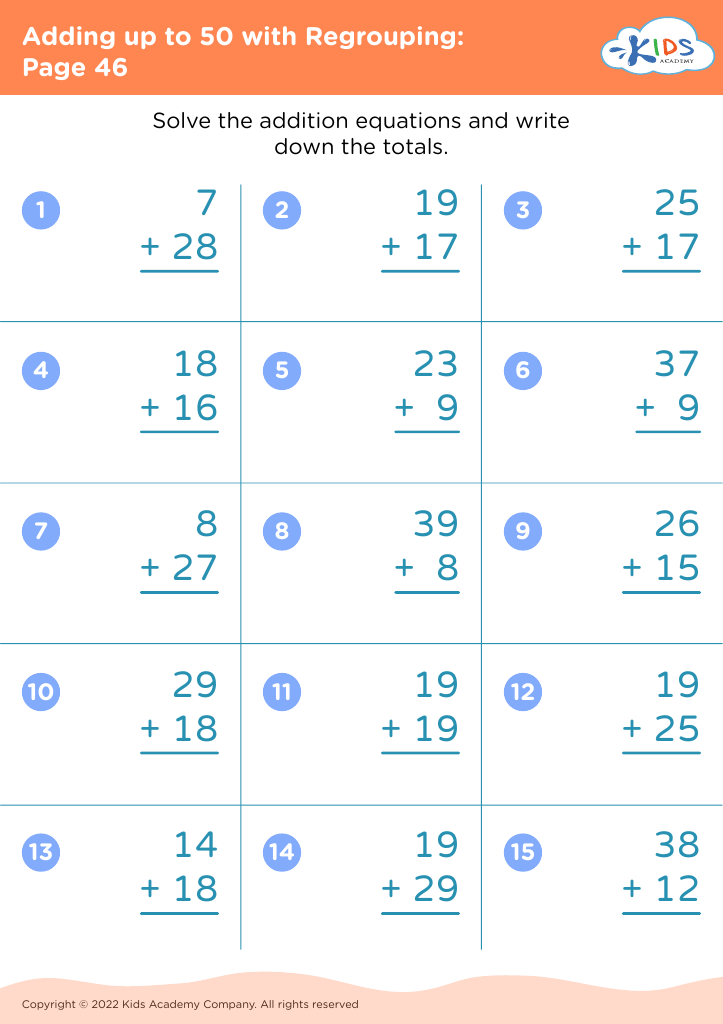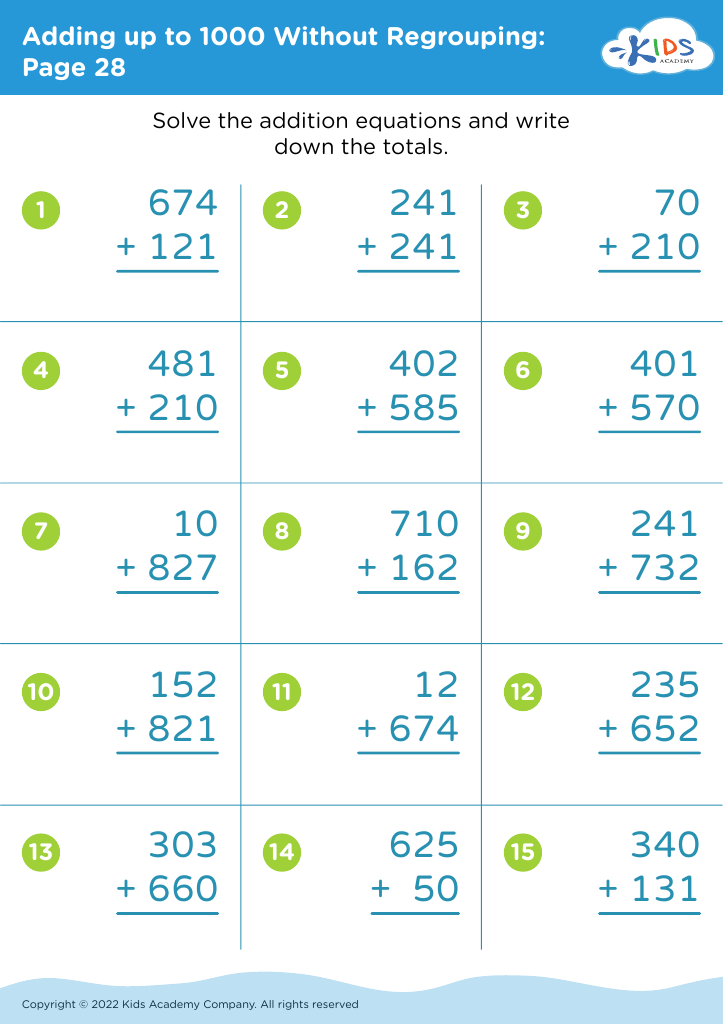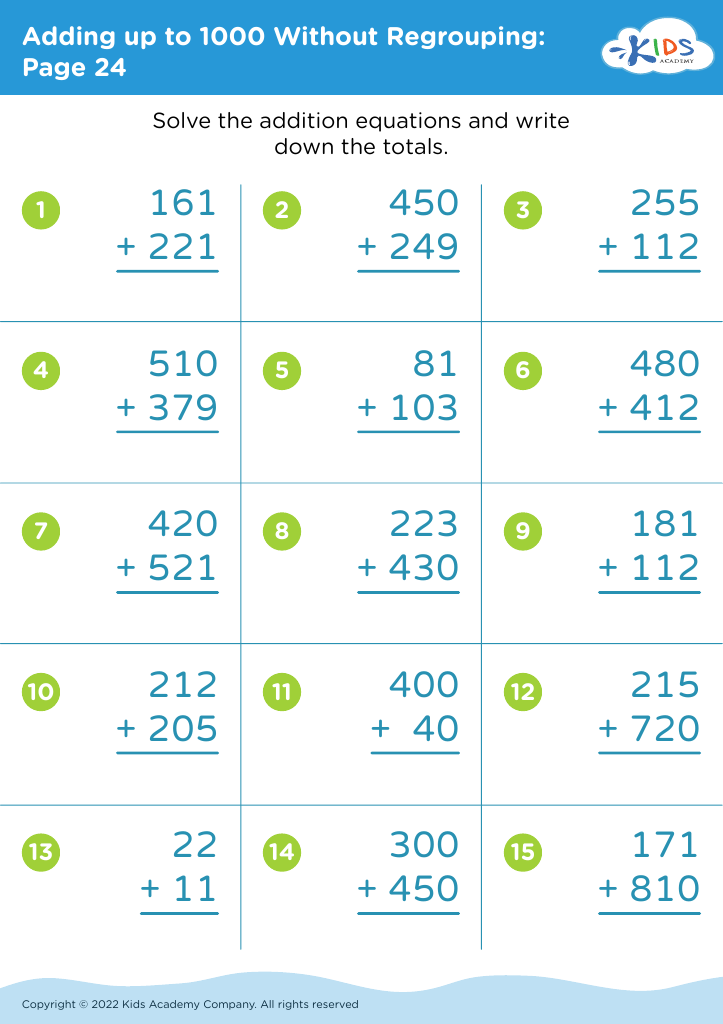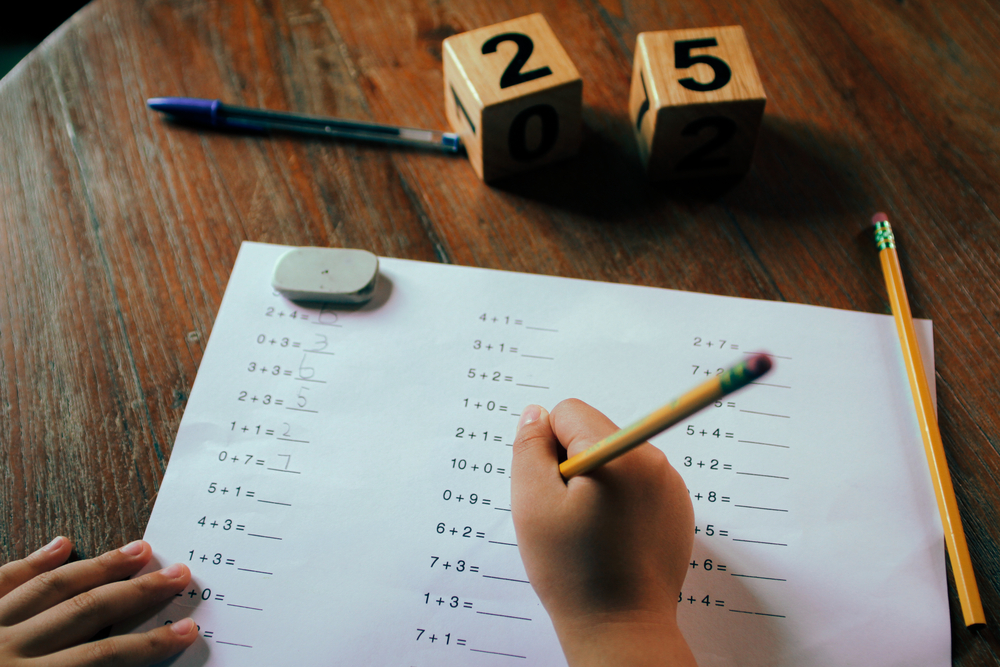Simplifying Fractions Math Worksheets for Ages 4-9
22 filtered results
-
From - To
Discover our engaging "Simplifying Fractions Math Worksheets" designed specifically for children aged 4-9. These interactive worksheets help young learners master the concept of fractions through fun exercises and colorful visuals. Our resources feature step-by-step instructions that simplify learning, making it accessible for early graders. From identifying fractions to reducing them to their simplest forms, these worksheets foster critical thinking and build a strong mathematical foundation. Perfect for classrooms or home study, our engaging activities encourage practice and promote confidence in math skills. Explore our collection today to support your child’s learning journey in a fun and effective way!
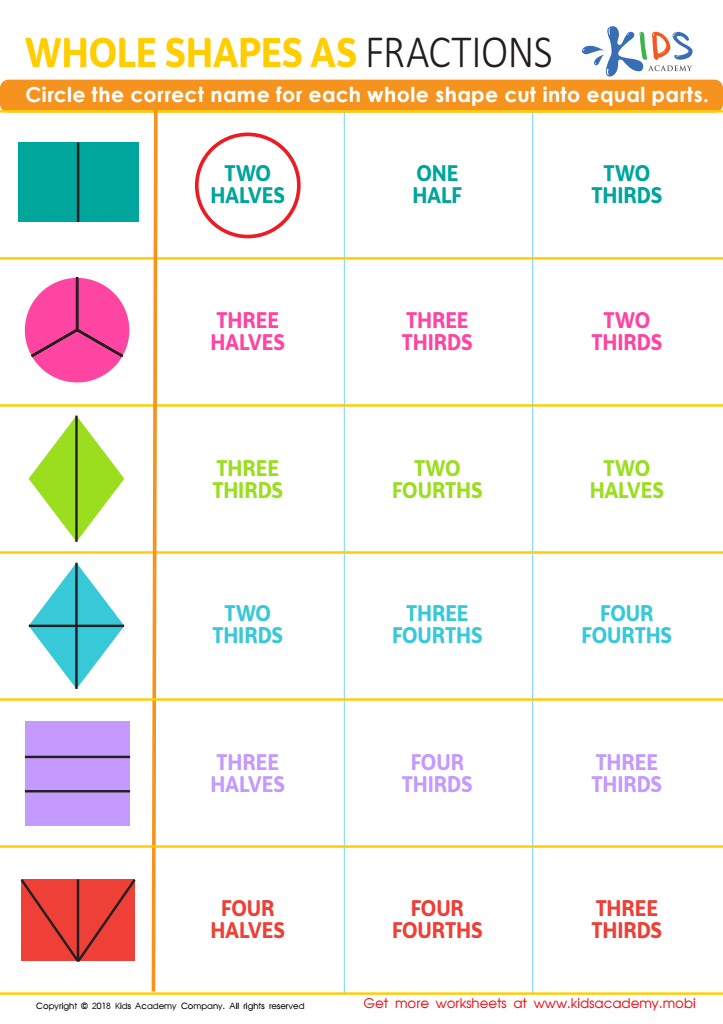

Whole Shapes as Fractions Worksheet
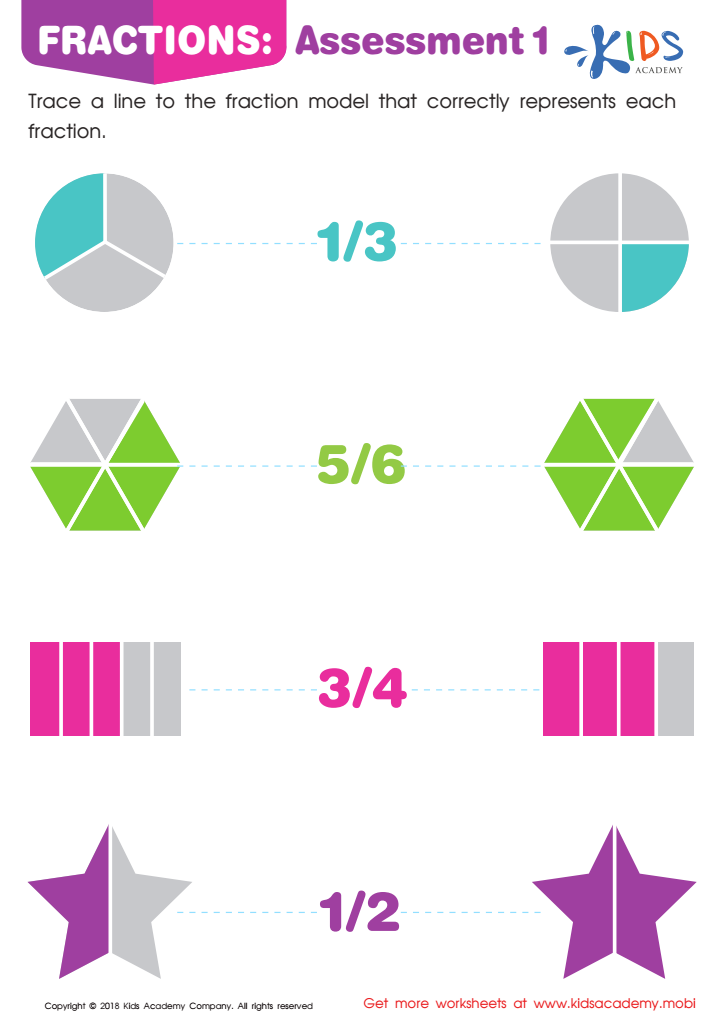

Fractions: Assessment 1 Worksheet
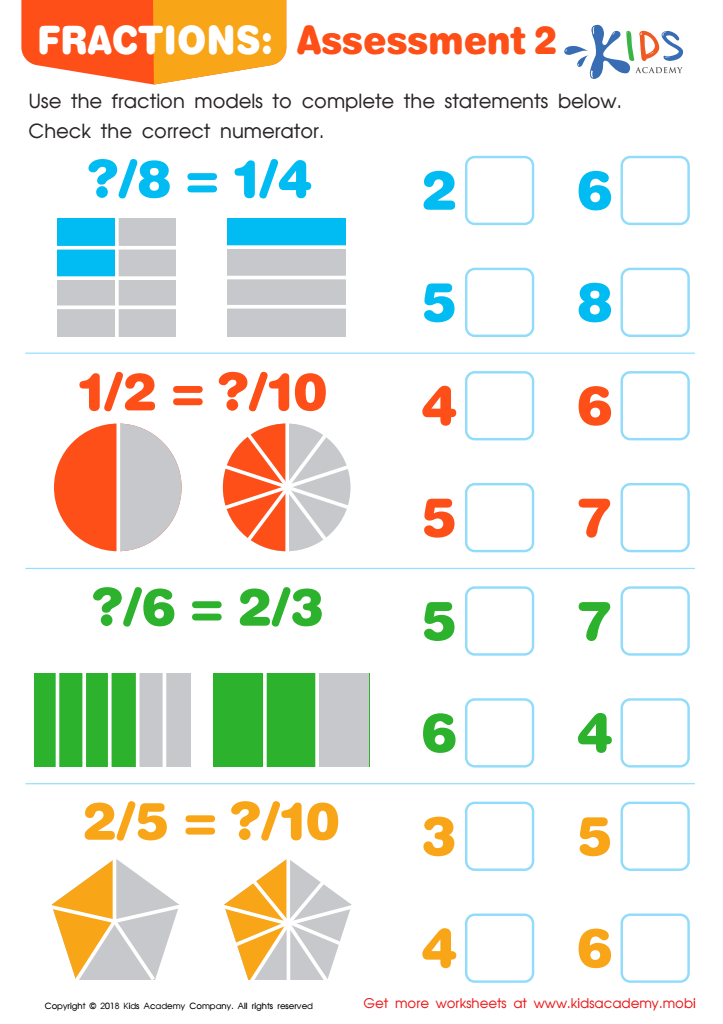

Fractions: Assessment 2 Worksheet
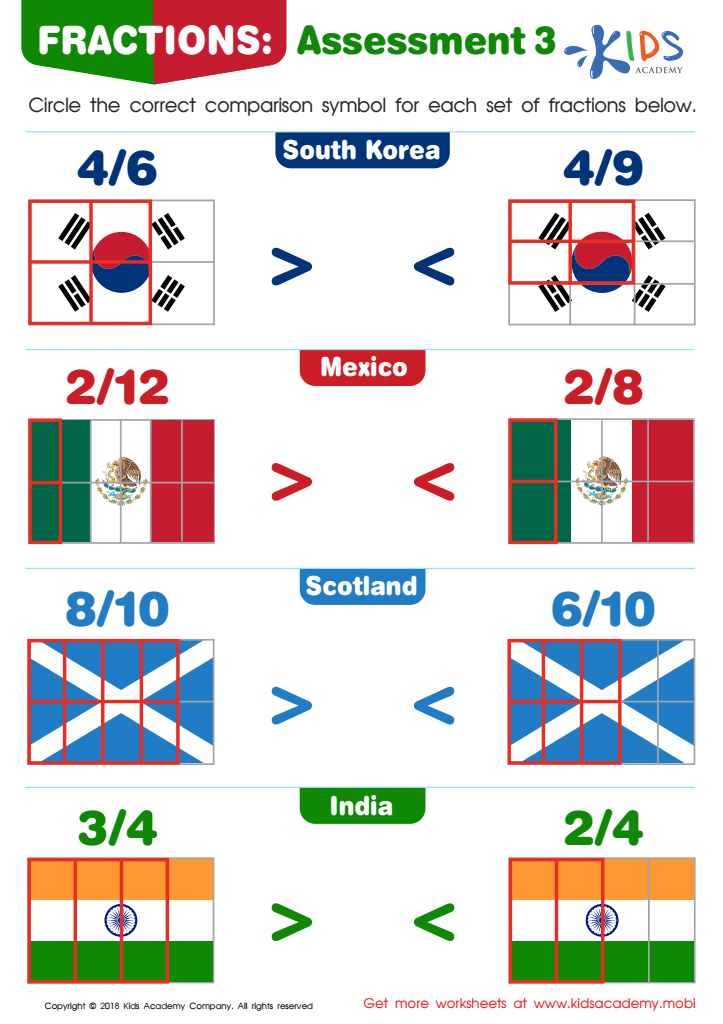

Fractions: Assessment 3 Worksheet
Simplifying fractions is a foundational mathematical skill that helps young learners develop a deep understanding of numbers and their relationships. For children aged 4-9, introducing this concept lays the groundwork for more complex math topics they'll encounter later on. When parents or teachers emphasize simplification, they teach children to recognize wholes and parts, fostering number sense—an essential skill in everyday life.
By simplifying fractions, kids learn problem-solving strategies that enhance their critical thinking and analytical skills. Engaging them in fun, interactive activities makes the learning process enjoyable and effective, as they gain confidence in their mathematical abilities.
Additionally, fostering an early appreciation for simplification compels kids to seek efficiency in their reasoning. Understanding how to reduce fractions streamlines computations and fosters clarity in mathematical expressions. In the classroom and beyond, children who master this skill are better equipped to tackle advanced concepts like equivalent fractions, ratios, and proportions.
Ultimately, simplifying fractions supports cognitive development and instills a love for learning, making it crucial for parents and teachers to prioritize this skill during these formative years. The investment in their mathematical education during this period pays dividends throughout their academic journey and everyday problem-solving.
 Assign to My Students
Assign to My Students
